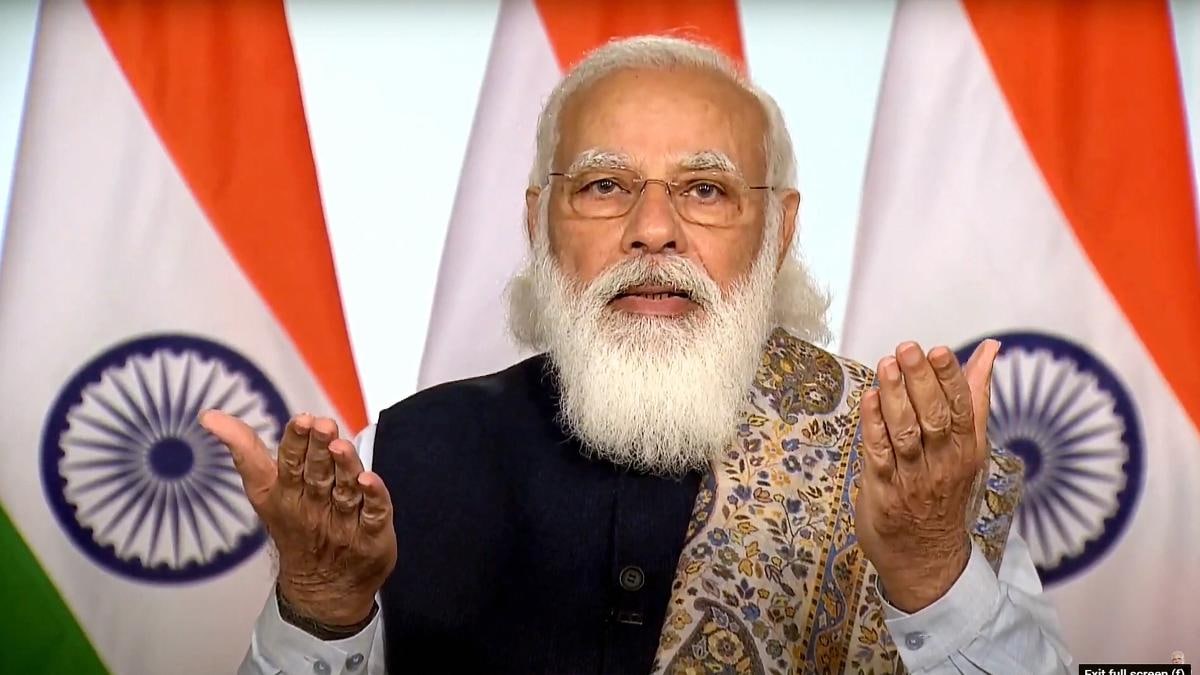Raghuram Rajan And Rohit Lamba Urge A Shift In India’s Economic Vision Or Follow The Old China Path; The PLI Scheme, Is It Doing More Harm Than Good?
In Indian policymaking, two prominent voices, Raghuram Rajan and Rohit Lamba, have emerged as outspoken critics of the government's flagship production-linked incentive (PLI) scheme. Their concerns extend beyond the inefficiencies of the program; they question the broader economic vision guiding India's growth trajectory. What are these perspectives, the issues they raise and the call for greater honesty, data-driven decisions, and informed public debate? Is The PLI scheme really benefitting India, or is it just a mirage?

Raghuram Rajan And Rohit Lamba’s Long-Standing Debate On PLI Scheme
The Production-Linked Incentive (PLI) scheme, introduced by the Indian government in 2020, stands as a cornerstone initiative to foster domestic manufacturing and reduce reliance on imports.
With a focus on incentivizing companies for incremental sales of products manufactured within the country, the PLI scheme spans across 14 sectors, including automobile, telecom, textiles, mobile manufacturing, electronic components, medical devices, pharmaceuticals, and specialty steel.
However, the PLI scheme has faced much scrutiny from notable figures such as former RBI Governor Raghuram Rajan and Rohit Lamba – they argue that the PLI scheme, designed to boost domestic manufacturing, falls short on two fronts-
– Not only does it allocate substantial funds to industries with limited growth potential, but it also neglects other sectors where India could excel globally.
– The duo challenges the fixation on manufacturing chips, emphasizing the need for a more expansive vision that capitalizes on India’s greatest strength – its vast human capital.

The Vision Gap
Rajan points out the danger of following the outdated path of export-led growth, reminiscent of China’s trajectory, asserting that India must recognize the evolving global scenario and redefine its economic vision accordingly.
The emphasis should shift from merely manufacturing goods to investing in human capital, ensuring opportunities for the country’s 1.4 billion people. The call is for a vision that transcends narrow objectives and positions India as a 21st-century power.
Data and Intellectual Honesty
Through their newspaper columns and interviews, Rajan and Lamba seek to expose what they perceive as a severe miscalculation of India’s economic policies.
While acknowledging the complexities policymakers face, Lamba advocates for greater “intellectual honesty” in evaluating the effectiveness of implemented policies.
The duo questions decisions such as import restrictions on laptops and PCs, highlighting the importance of evidence-backed policy making.

The Need for Informed Debate
Rajan and Lamba have equally stressed the necessity of open and informed public debates on economic policies by expressing disbelief in certain policy decisions and calling for a deeper examination of the rationale behind them.
The economists emphasize the importance of data-driven discussions, urging policymakers to provide transparent explanations for their choices – the proposed Micron chip assembly and test facility in Gujarat serves as a case in point, with Rajan and Lamba questioning the allocation of significant funds.
Investing in Human Capital
Amid their critique, Rajan and Lamba propose an alternative approach to achieving growth – a shift up the manufacturing chain through investment in human capital.
They argue that reorienting the PLI scheme to focus on skill development rather than subsidies could generate the desired economic growth without compromising political feasibility.
Still Hopefull
Despite facing criticism and accusations of political bias, Rajan remains hopeful that the government is genuinely interested in the welfare and growth of its people.
Rajan and Lamba share the idea of instigating constructive debates beyond the realms of social media chatter, urging citizens to focus on shaping the future rather than dwelling on historical controversies.

Evaluating India’s Push for Manufacturing Growth
Before we get into evaluating the PLI scheme, we need to understand its objectives – the PLI scheme is designed to serve multiple purposes, ranging from stimulating the manufacturing sector to bolstering employment and reducing import dependency.
The key objectives include – encouraging foreign companies, creating micro jobs and boosting exports.
Funds Allocation and Sectors Covered
The government has allocated a substantial ₹1.97-lakh crore for the PLI scheme; the scheme includes 14 key sectors, reflecting a comprehensive approach to address diverse facets of the Indian economy, including automobiles, textiles, mobile manufacturing, electronic components, medical devices, pharmaceuticals, and speciality steel.

Raghuram Rajan’s Critique
Raghuram Rajan, the former RBI Governor, has raised questions about the efficacy of the PLI scheme.
While the government touts increased mobile exports as a sign of success, Rajan insists on a more nuanced evaluation of the scheme’s impact, arguing that the scheme acknowledges India’s manufacturing challenges, such as inadequate infrastructure, high finance costs, limited design capabilities, and skill deficiencies.
However, Rajan questions the scheme’s effectiveness in addressing these issues promptly.
Hence, to assess the true value of the PLI scheme, it is imperative to ask critical questions:
1. Addressing Root Causes: Does the PLI scheme adequately address the root causes of India’s manufacturing challenges, or is it a temporary fix?
2. Timeliness of Solutions: Given the time required to address infrastructure, finance, and skill deficiencies, is the PLI scheme a timely alternative for boosting manufacturing?
3. Effectiveness of Incentives: How effective are the incentives provided under the scheme, including financial rewards and state-level tax incentives?
4. Measuring Success: Should success be measured solely by export numbers, or should broader economic indicators be considered?
Therefore, the evaluation of the PLI scheme should go beyond superficial success metrics, considering the long-term impact on manufacturing, employment, and overall economic growth.
Raghuram Rajan’s skepticism highlights the need for a robust dialogue, encouraging policymakers to refine and adapt the scheme to address the complexities of India’s manufacturing ecosystem.
A critical examination is imperative to discern whether the substantial incentives provided are yielding the intended results or inadvertently leading to a misallocation of public resources.
The Viewpoint
1. Industry Selection Transparency
The PLI scheme’s success hinges on the industries it supports, and the recent involvement of Apple in Indian cell phone assembly has prompted questions.
While the government highlights increased mobile exports as evidence of success, critics argue that it might be more a result of global economic dynamics and India’s growing market appeal.
The absence of transparent criteria for industry selection raises concerns about whether the PLI scheme is truly directing funds to sectors that need incentives or merely offering freebies to industries that were already inclined to invest.
2. Evaluating External Surplus
The PLI scheme’s methodology, rewarding manufacturers for every unit produced, has potential pitfalls when assessing its impact on external surplus.
The increase in exports may be deceptive if it involves mere assembly without substantial value addition, and a more accurate metric for success is the change in (Value of Mobile Exports – Value of Imports) – Repatriated profits and royalties.
This nuanced approach is crucial for understanding the scheme’s true contribution to India’s external surplus and whether it aligns with the intended goals.
3. Sustainability Beyond PLI
The PLI scheme’s long-term impact relies on whether manufacturers find it worthwhile to continue production in India after incentives, thus necessitating substantial integration of the supply chain within the country to prevent a swift exit post-subsidies.
Job creation, a key indicator of value addition, remains a concern, especially as government figures indicate underperformance; the discrepancy raises questions about the long-term viability and sustainability of manufacturing in India beyond the PLI scheme.
4. Efficient Use of Government Resources
The PLI scheme’s cost, including incentives and other tax benefits, must be critically evaluated against the increased production it aims to achieve.
This prompts a broader question about the optimal allocation of government resources – advocates for education and research argue that investing in high-quality schools and universities could yield more sustainable economic benefits.
The government’s budget constraints, coupled with the debt-like nature of contracted PLI incentives, heighten the importance of ensuring the most efficient use of public funds.

Viewpoint on the Positive and Negative Aspects of the PLI Scheme
Positive Aspects
1. Boost to Manufacturing-
The PLI scheme is a powerful tool to boost the manufacturing sector in India by providing financial incentives to companies for incremental sales of domestically manufactured products, it encourages investment in production facilities.
2. Attracting Foreign Investment –
The scheme aims to attract foreign companies to set up manufacturing units in India, contributing to economic growth and employment generation.
The prospect of incentives under the PLI scheme may incentivize global companies to diversify their production away from countries like China.
3. Employment Generation-
In sectors such as mobile manufacturing, pharmaceuticals, and food products, the PLI scheme has the potential to generate employment opportunities.
Creating micro-jobs through domestic production aligns with the government’s goal of enhancing livelihoods.
4. Reducing Import Dependency-
By incentivizing domestic production, the PLI scheme seeks to reduce India’s dependency on imports, making the country more self-reliant in key sectors.
This can enhance economic resilience and contribute to a more balanced trade environment.
5. Strategic Sector Focus-
The scheme strategically focuses on key sectors such as automobiles, textiles, mobile manufacturing, electronic components, medical devices, pharmaceuticals, and specialty steel, contributing to a diversified and robust industrial base.

Negative Aspects
1. Lack of Transparency in Industry Selection-
One of the primary criticisms of the PLI scheme is the lack of transparency in the process of selecting industries for incentives.
Thus, it raises concerns about whether the scheme effectively targets sectors that genuinely need incentives or provides unnecessary subsidies to industries that are already inclined to invest.
2. Potential for Misuse by Large Corporations –
There is a risk that large industrialists, who might have invested in certain industries even without the PLI scheme, could disproportionately benefit from the incentives.
This raises questions about the equitable distribution of resources and whether the incentives genuinely contribute to new investments.
3. Limited Focus on Value Addition –
The PLI scheme’s design, rewarding manufacturers for every unit produced, may not adequately incentivize value addition.
It can lead to scenarios where assembly operations without substantial value addition receive incentives, potentially hindering the scheme’s goal of enhancing manufacturing capabilities.
4. Complexities in Evaluating External Surplus-
The scheme’s structure, which pays manufacturers based on the number of units produced, poses challenges in accurately evaluating its impact on external surplus.
However, the focus on exports may not necessarily translate to increased value addition in India, as highlighted by concerns related to mobile phone manufacturing.
5. Uncertain Sustainability Post-PLI-
The long-term sustainability of manufacturing in India beyond the PLI scheme remains uncertain.
If manufacturers do not find it economically viable to continue production after the incentives end, the scheme’s impact may be short-lived.
The Last Bit, While the PLI scheme demonstrates a commitment to bolstering India’s manufacturing sector, it is essential to address the highlighted challenges for its effective implementation.
Transparency in industry selection, a nuanced understanding of external surplus, and a focus on sustainable manufacturing practices are critical to maximizing the positive impact of the scheme.
A balanced approach, backed by continuous evaluation and refinement, is necessary to ensure the scheme aligns with its intended goals of fostering economic growth, job creation, and self-reliance.
Rajan and Lamba’s critique transcends the PLI scheme, and asks for a broader call for a redefined economic vision, honesty in policymaking, and informed public debate.
Their collective hope is to stimulate conversations that transcend political bickering and inspire a shared vision for India’s future.
As their arguments seep into the wider discourse, the challenge lies in transforming these discussions into tangible policy changes that align with the evolving global economic landscape.
At the same time, the public deserves a thorough and evidence-based assessment, especially when significant public resources are at stake.
An informed debate and data-driven analysis will contribute to ensuring the PLI scheme’s alignment with its intended goals of fostering economic growth, job creation, and sustainable development.
Which side of the coin are you?




